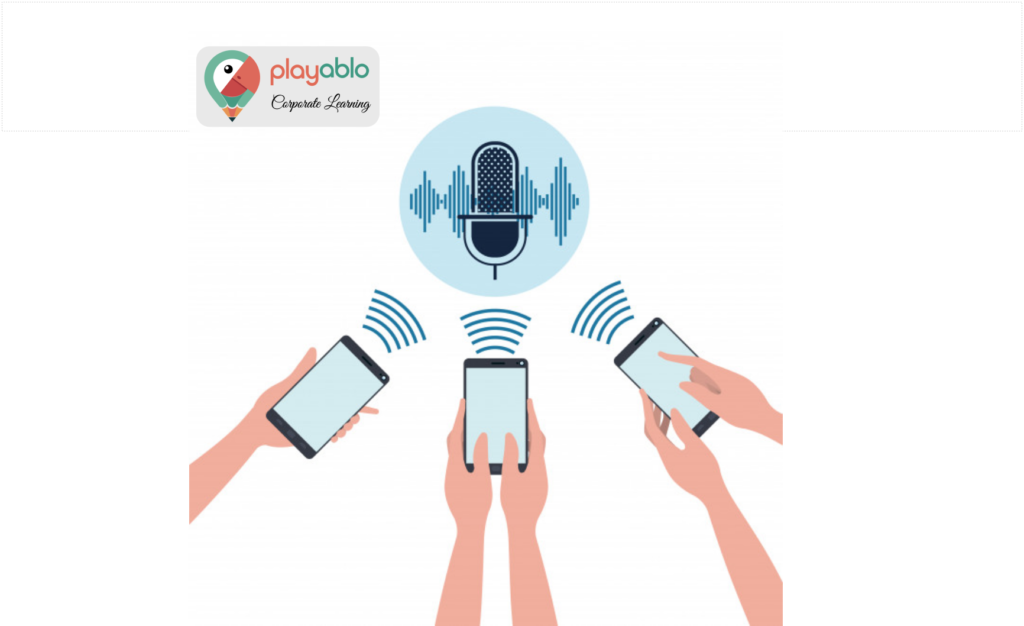The future of e learning looks bright, with significant growth projected in the coming years. According to a report, the global eLearning market is expected to reach USD 374.3 billion by 2026, growing at a CAGR of 9.1% from 2021 to 2026. This growth is due to educational institutions and organizations’ increasing adoption of digital learning to improve learning outcomes and reduce costs associated with traditional learning methods.
The growth of eLearning can be attributed to several factors, including the rapid technological advancements in the field of education. With the widespread availability of high-speed internet and the proliferation of smartphones and other mobile devices, eLearning has become more accessible and convenient than ever. The mobile learning market is expected to reach $78.5 billion by 2025, growing at a CAGR of 14.5% from 2020 to 2025.
Another significant factor contributing to the growth of eLearning is the increasing demand for upskilling and reskilling among the global workforce. According to Forbes, companies with strong learning cultures are 46% more likely to be leaders in their industry. The COVID-19 pandemic has further accelerated the adoption of eLearning, with many educational institutions and organizations shifting to online learning to comply with social distancing measures. The pandemic has caused a 15% increase in global ed-tech investments, totaling $16.1 billion in 2020.
The future of e-learning is bright, with significant growth projected in the coming years. The COVID-19 pandemic has accelerated the adoption of eLearning, and technological advancements and the increasing demand for upskilling and reskilling among the global workforce are expected to drive further growth in the industry.

Yes, “eLearning is changing. And we will see new models, new technologies, and designs emerge. So, let’s drop the “e” – or at least give it a new and broader definition” — Elliot Masie (the educational expert who coined the term eLearning to define online learning). So, today, we will illustrate how the growth of eLearning has progressed to date. We will also outline how the past has paved the way to the current NOW. And how the future of eLearning will continue to evolve. Let’s dive into the growth of eLearning over the years.
Table of Contents
Growth of eLearning: A Brief Overview of its History
During the 19th century, advancements in printing and mail delivery made it possible for distance education to gain popularity. In 1858, the University of London became the first institution to offer degrees to students who had studied remotely. Students could access course materials and submit assignments via mail, and their progress was monitored through correspondence with their instructors.
In the United States, the establishment of the Chautauqua Institution in 1874 provided a platform for remote education. The institution offered a range of courses via correspondence, including philosophy, science, and languages. The Chautauqua movement gained popularity across the country, and by the early 20th century, over 10,000 study circles had been established.
Meanwhile, Isaac Pitman‘s correspondence courses in shorthand gained popularity in Europe and the United States. Students could learn shorthand at their own pace and submit their work to Pitman for grading via mail. This paved the way for other educators to experiment with remote learning and set the stage for the growth of distance education in the coming years.
In the 1930s, radio broadcasts were used for educational purposes; by the 1940s, television had become a mainstream medium of communication. The potential for using these mediums for distance learning was quickly realized, and educational programs were broadcasted to students across the country.
Another significant development in the growth of eLearning during this time was the emergence of behaviorism in psychology. Behaviorism focuses on the measurable behavior of individuals, and its principles were applied to education. The idea that learning could be quantified and measured through testing and assessment became central to educational theory.
In 1924, the world witnessed the invention of the first testing machine, which allowed learners to test themselves. In the late 1940s, the first electronic computer was invented. While it was primarily used for scientific and military purposes, it marked the beginning of a technological revolution that would transform the way people learned and worked.
By the 1950s, Harvard professor BF Skinner had introduced the teaching machine, a device that could impart programmed instructions to students. These machines were based on the principles of behaviorism, and their use in education paved the way for the development of computer-based training programs.
Then, in the 1960s, the world witnessed the first computer-based training program (CBT) at the University of Illinois, USA. Institutes across the US eventually adopted the CBT program, named PLATO-Programmed Logic for Automated Teaching Operations — which played a massive role in paving the way for the future of e-learning.

The original online programs were used only to deliver information to learners. But with the onset of the 1970s, the technology became more interactive. In the UK, the Open University wanted to reap the maximum benefits from the growth of e-learning. They wanted to use tools to enhance their existing distance learning design.
Previously, the Open University used to share course materials via post or mail. But with the invention of the Internet, it started including interactive components in its courses. It additionally began introducing faster communication mediums like email.
The Early 1980s: A Significant Time Frame Contributing to the Growth of eLearning
In the early 1980s, people saw personal computers making an appearance. These devices were then equipped only with read-only technologies – Web 1.0. However, when Apple came up with its Macintosh computer in 1984, offering better graphical and text support, the world of online learning saw a drastic transformation. Teachers could create their own software and tutorials, while corporates also started developing computer-based educational materials and learning games.
In 1990, we had the Multimedia PC, aka MPC, complete with a CD-ROM drive. This means that the devices can play audio and video in sync. Microsoft Powerpoint was another popular feature that lecturers instantly adopted, executives, teachers, and students. MPCs were able to use video, audio, graphics, and animation to create an interactive experience.

Finally, in 1999, Elliott Masie coined the word ‘eLearning’ at his TechLearn Conference at Disneyworld.
The Growth of e-Learning NOW (2000 Onwards)
With the World Wide Web boom in the early 2000s, CD-ROMs became obsolete. Now that we had high-speed Internet, enhanced multimedia features, broadband, and LAN, creating online content became an effortless task.
Bluetooth allowed short-range connectivity to devices like phones and printers and enhanced browser technologies, lending a seamless user experience. Trainers could now easily deliver online classes, and students started enrolling in distance education programs.
In 2004, the Web 2.0 concept was widely circulated by Tim O’Reilly at the O’Reilly Media Conference. This jump from the original read-only Web 1.0 allowed learners and trainers to interact, create, contribute, communicate, and collaborate via social media, forums, Wikipedia, and blogs.

The Adobe Flash video was introduced in 2005, which brought more flexibility to online content creation. With less bandwidth, users were now able to embed and play clips instantly. Of course, when YouTube was launched the same year, the market for the growth of eLearning saw a tremendous pace.
2008 saw the mobile web launch with the introduction of smartphones. Internet-enabled tablets and Apple’s iPod Touch, iPhone, and iPad lines transformed the way developers created educational software, and the manner teachers disseminated knowledge.
In 2010, HTML’s introduction, coupled with CSS3 and JavaScipt, gave rise to browser + device compatibility, tailored online content, and embedded multimedia.
April 2013 marked the launch of Tin Can API, a version of SCORM. It removed the browser’s requirement, accelerated mobile learning, promoted team-based training, introduced cross-domain functionality, and allowed simulations and gamification — resulting in further growth of eLearning.
Adaptive learning emerged as a new trend in 2015. It refers to the use of technology to personalize learning experiences based on a learner’s needs, abilities, and preferences. Adaptive learning algorithms analyze a learner’s performance and adjust the course material to meet their specific requirements.
Micro-learning gained popularity in 2016. It refers to the delivery of small, bite-sized learning modules that are easy to digest and retain. Micro-learning LMS modules can be delivered through various formats, including videos, infographics, and quizzes.
Virtual Reality (VR) and Augmented Reality (AR) — significant drivers for the growth of eLearning — gained momentum in 2017, offering immersive learning experiences. VR provides a fully simulated environment, while AR adds digital elements to the real world. These technologies have been used to create simulations, games, and immersive learning experiences.
Gamification continued to be a significant trend in eLearning in 2018. It refers to the use of game design elements in non-game contexts to engage learners and motivate them to learn. Gamification can be applied to various aspects of corporate online learning, including assessments, quizzes, and simulations.
Artificial Intelligence (AI) emerged as a new trend in eLearning in 2019. AI can be used to personalize learning experiences, analyze learner data, and provide recommendations for further learning. AI can also be used to automate administrative tasks, such as grading assessments and providing feedback.
Currently, the market for eLearning features multiple Learning Management Systems, each with different specifications. Blended learning has become a norm — both in educational institutes and corporates.
Growth of eLearning: The Future
eLearning solutions have currently progressed to become the first choice when it comes to training employees. Some of the trends that will rule this technology are the transition from desktop to mobile learning management systems and microlearning. Tech-savvy learners prefer mobile-based modules since bite-sized learning leads to higher retention rates.
Augmented and Virtual Reality solutions have made the VR experience a household term now. The opportunities are endless if corporations integrate AR and VR into their LMS solutions. Learners get a more interactive experience, but they can also absorb information just like in the real world.

Personalized and subscription-based eLearning will help organizations slash extra costs and deliver more focused content which stresses their core values. Several leading organizations are also deploying deep Learning and AI as a service. Finally, the growth of eLearning will heavily depend on big data and algorithms. Of course, in addition to LMS, xAPI is increasingly gaining importance. These LMS features allow corporates to collect data from a gamut of online and offline training activities.
In an increasingly data-driven world, incorporating the right tools shall pave the way for a complete online training experience, leading to massive growth in eLearning. Do you have any additional thoughts? Do not forget to drop a comment below!
Ad: PlayAblo’s Enterprise-Grade Micro-Learning platform is built for millennial learners. Built-in assessments and gamification features ensure learning outcome measurement along with sustained engagement. Find out more and request a custom demo!







6 Comments